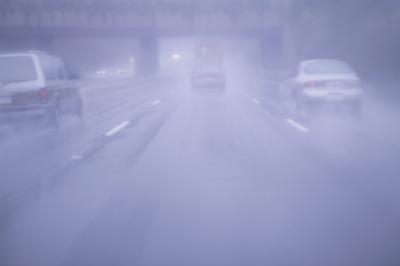
Hydroplaning occurs when water on the road causes the car to lose contact with the surface. This can cause a dangerous loss of control, and even if the driver recovers, it can be a harrowing experience. While hydroplaning is generally thought to happen only when there is deep water, it can actually occur with very little water standing on the road. Additionally, other factors can contribute to hydroplaning.
The basic explanation of hydroplaning is that more water accumulates on the road than the car's tires can move out of the way. The water gets trapped in front of the tire, pushes back under the wheel and a wedge of water lifts the car. The contact area of the tire on the road is really quite small, so even a thin layer of water may cause the car to lift.
Obviously, water is required to hydroplane, but the amount necessary is quite low. In fact, roads are most prone to cause hydroplaning just after rain has started, when it mixes with oil and debris on the road to create a slick surface. Harder rain tends to wash these elements away. The amount of water required is decreased as speed increases, but even at low speeds, a small amount can be enough to cause a car to slide.
The tire's tread can affect hydroplaning in two ways. First, tires that have worn tread are more likely to hydroplane. This is due to the inability of the tire to channel water away. The second factor has to do with the tread design. Some tires are made to reduce hydroplaning by pushing water out through specifically designed channels. These tires are "unidirectional" and must be mounted in the correct direction.
Two other factors that can affect hydroplaning are speed and vehicle weight. Increases in speed cause the tire's footprint to decrease, which in turn requires less water to cause hydroplaning. The vehicle's weight is also a factor. Lighter vehicles are more likely to hydroplane than heavier ones.
Tire inflation can also influence hydroplaning. Properly inflated tires always give the driver more control over a vehicle. Tires that are improperly inflated do not contact the road with the designed footprint. Low inflation causes the middle of the tire to concave, allowing more water to accumulate under the tire. High inflation causes the edges of the tire to lose contact with the road, thus reducing the area of contact on the surface.